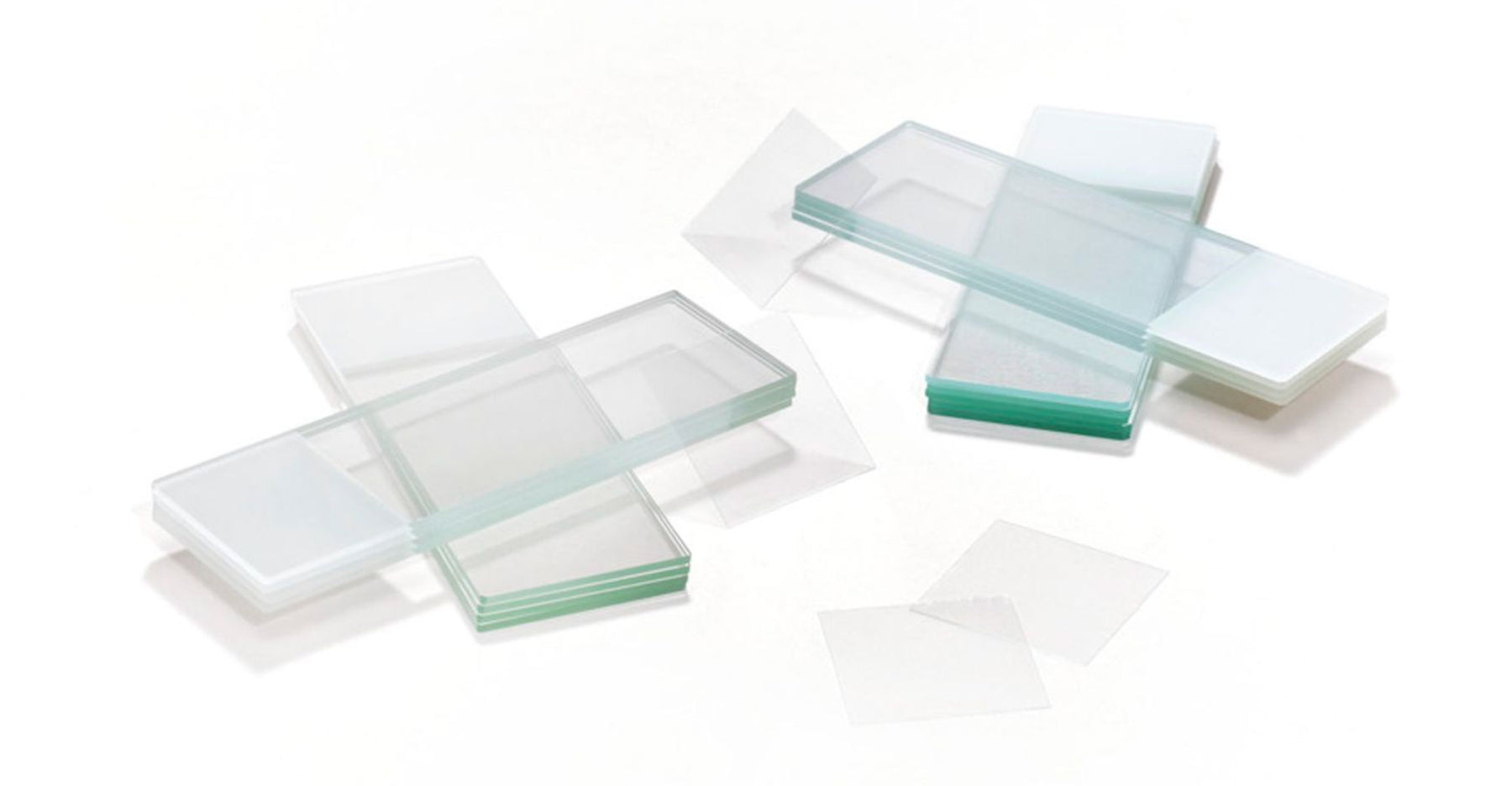
What are the different types of plain glass microscope slides?
Don’t take the humble glass slide for granted. These unassuming little rectangles lie at the heart of casual microscopy and professional scientific research alike.
Despite their simple appearance, they come with a surprising variety of features and benefits.
Let’s take a quick look at the types of plain glass microscopes slides you might encounter.
Frosted slides
Frosted slides are popular with professionals and hobbyists alike.
Unlike transparent slides, their tips have a frosted appearance, allowing you to label your slides for quick identification and storage.
They’re ideal for shared workspaces and classrooms.
Frosted slides come in 2 types – frosted on just one end, or on both ends.
Coloured slides
Coloured slides also have frosted tips, but the frosting comes in an array of vibrant and easily distinguishable colours.
Not only does this allow for effortless labelling but it’s useful for quickly identifying and organising your collection.
When you’re dealing with a larger collection or a busy workplace, colour-coding is a simple and effective way to keep track of samples.
Charged slides
Charged slides are exactly what they sound like – they have a permanent positive charge that can be beneficial for certain types of samples.
For example, tissue sections and other specimens tend to carry a negative charge. The electrostatic attraction between the negatively charged sample and positively charged slide ensures that the sample adheres more strongly to the slide.
Edges
When it comes to slide edges, there are 2 main types to choose from – cut slides or ground (bevelled) edges.
Cut glass slides are generally cheaper but have sharp and unpolished edges that can be dangerous to handle and even cut through gloves or skin. For this reason, they’re not usually used in lab settings.
On the other hand, ground or bevelled edge slides have had their edges smoothed or ground down to make them much safer to handle.
The bevelled slides also make it easier to create blood smears, making them a popular choice with medical laboratory professionals.
Corners
There are also different types of slide corners – 90°, 45° and clipped.
90° corners are typically found on cheaper cut glass slides and have a sharp 90-degree angle. They can be harder to handle and potentially dangerous so they’re not as popular anymore.
45° corners are more commonly used because they have a gentler angle that’s easier to handle.
Finally, clipped corners are a mix between 90° and 45° corners.
Size
Depending on the samples you’re examining, you may need a range of different sizes to get the job done right.
Standard microscope slides are usually about 75 x 26mm, but if you’re interested in studying rocks and minerals, you might need something a bit larger.
Geologists and petrologists often look at incredibly thin slices of their samples and need specially sized slides to accommodate them. These can range from 75 x 50mm all the way down to 46 x 27mm, depending on the job at hand.
So, there you have it. Who knew there was so much to learn about the common glass slide?
Whether you’re looking for added safety or added convenience, choosing the right slide can make all the difference. So don’t be afraid to shop around and find the perfect fit for your needs and budget.
